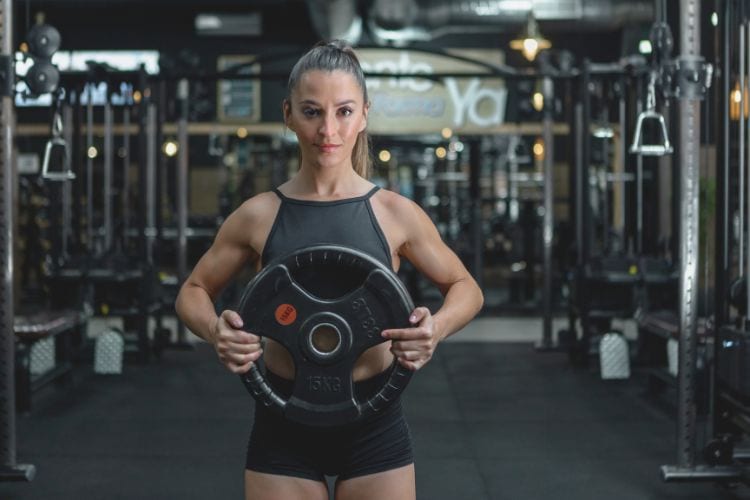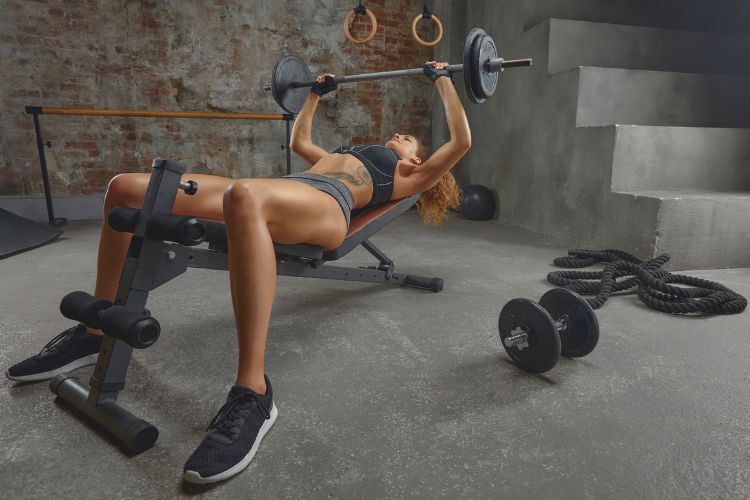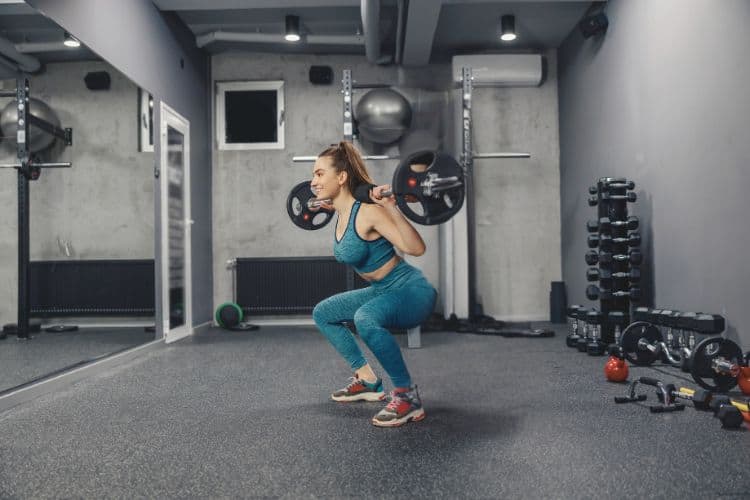Sign up for workout ideas, training advice, reviews of the latest gear and more.






When it comes to sculpting a strong, toned physique, women have just as much to gain from weightlifting as men do. One of the most effective exercises in a woman’s strength-training arsenal is the dumbbell row. Whether you’re new to weightlifting or a seasoned pro, the dumbbell row is a versatile and powerful exercise that can help you achieve your fitness goals. In this article, we’ll dive into the world of dumbbell rows for women, exploring their benefits, proper form, variations, and some essential tips to maximize your results.
Dumbbell rows are an excellent exercise for women looking to build strength and tone their upper bodies. This compound movement primarily targets the muscles of the upper back, including the latissimus dorsi (lats), rhomboids, and trapezius. Strengthening these muscles can improve posture, reduce the risk of back pain, and help create that desirable V-shaped upper body.
Many women spend a significant portion of their day sitting at desks or hunched over electronic devices. This can lead to poor posture and rounded shoulders. Dumbbell rows can counteract these issues by strengthening the muscles responsible for pulling your shoulders back and down. As a result, you’ll stand taller and feel more confident.
To perform a dumbbell row correctly, you need to engage your core muscles. This means you’re not only working your back but also building a strong and stable core. A strong core is essential for overall strength and can help prevent injuries in everyday activities.
Dumbbell rows can be adapted to various fitness levels and goals. Whether you’re a beginner or an experienced lifter, you can adjust the weight and intensity to suit your needs. Plus, there are numerous variations to keep your workouts fresh and challenging.
Before you dive into your dumbbell row routine, it’s crucial to master proper form to maximize the benefits and prevent injuries. Here’s a step-by-step guide on how to perform a basic dumbbell row:
Start by selecting an appropriate dumbbell weight. You should be able to perform your desired number of repetitions with proper form, but it should still be challenging. Place the dumbbell on the floor beside a bench or sturdy surface.
Stand with your feet hip-width apart, one foot slightly in front of the other. This staggered stance will help maintain balance during the exercise.
Bend your knees slightly to lower your torso toward the floor. Keep your back straight and your chest up, maintaining a neutral spine.
With your right hand, bend at the hips to reach down and pick up the dumbbell. Your left hand can rest on the bench or your thigh for support.
Exhale as you pull the dumbbell toward your hip, keeping your elbow close to your body. Focus on squeezing your shoulder blades together at the top of the movement.
Inhale as you lower the dumbbell back to the starting position, fully extending your arm.
Complete the desired number of repetitions on your right side before switching to your left. Perform three sets of 8-12 repetitions per arm, gradually increasing the weight as you become more comfortable with the exercise.
To keep your workouts exciting and target different muscle groups, consider incorporating these variations of dumbbell rows into your routine:
This challenging variation adds an element of balance and core stability. Start in a push-up position with a dumbbell in each hand. Perform a row with one arm while balancing on the other. Alternate sides for a full-body workout.
T-bar rows are typically performed using a T-bar row machine at the gym. However, you can replicate the movement using a barbell and landmine attachment or a corner of a room. This exercise emphasizes the mid-back and lats.
Performing single-arm dumbbell rows on a bench provides better support for your back and allows for a fuller range of motion. Place one knee and one hand on the bench while rowing with the opposite arm.
Inverted rows are an excellent bodyweight alternative to dumbbell rows. Lie on your back under a bar or a sturdy suspension trainer, grab the bar, and pull your chest up to it while keeping your body straight.
To get the most out of your dumbbell row workouts, follow these tips:
Before diving into heavy lifting, warm up your muscles with some light cardio and dynamic stretches. This will help prevent injuries and prepare your body for the demands of the exercise.
Don’t rush to lift heavy weights. Proper form is paramount. Start with lighter weights to ensure your technique is correct before gradually increasing the load.
Remember to breathe throughout the exercise. Exhale as you lift the dumbbell and inhale as you lower it. Proper breathing helps stabilize your core and maintain good form.
Keep your back straight and your core engaged throughout the movement. Avoid rounding your back or arching it excessively.
As you become more comfortable with dumbbell rows, increase the weight or try different variations to challenge your muscles and keep your workouts effective.
Consistency is key to seeing results. Include dumbbell rows in your strength-training routine at least twice a week, allowing for adequate rest between sessions.
Dumbbell rows for women are a fantastic addition to any strength-training regimen. Not only do they help target key muscle groups in the upper body, but they also improve posture, engage the core, and offer versatility for all fitness levels. Remember to prioritize proper form, start with an appropriate weight, and gradually progress to more challenging variations. With dedication and consistency, you’ll reap the rewards of a stronger, leaner, and more confident you. So, grab those dumbbells and start rowing your way to a healthier, fitter future.
Stay up to date on the latest women’s health, fitness and lifestyle trends and tips.